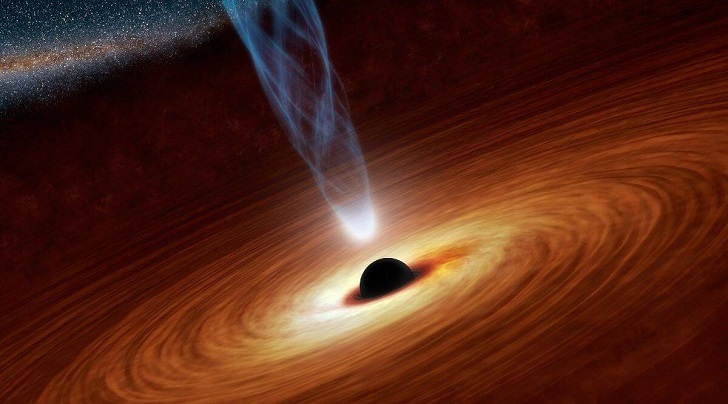What would you get if you took the solar system and replaced the sun with a black hole and the Earth with the sun? The response to this would resemble the recently-found black hole-star binary system Gaia BH1. This constellation has a black hole with the closest stellar mass to Earth and a star that orbits it at an astonishing 223,000 miles per hour.
How did the Blackhole appear?

MARK GARLICK/ Getty Images | Astronomers have located the closest stellar-mass black hole to Earth ever discovered
NASA reports that the majority of black holes are created by the demise of massive stars. When stars with masses around ten times that of the sun or more approach the end of their existence, they explode violently in supernovae. They leave behind a black hole with the mass of at least several suns compressed into a relatively compact area. These dense objects have gravitational forces so powerful that nothing, not even light, can escape them.
Since a black hole emits no light, scientists cannot directly witness one. The Times reports that as active black holes consume nearby matter, they generate X-rays that indicate their presence to scientists.
However, non-feeding black holes, such as the recently discovered ones, do not release X-rays. Even if latent black holes are more prevalent, they might be difficult to detect. Per the Times, El-Badry and his colleagues discovered evidence of its existence in data from the European Space Agency’s GAIA probe, which records the locations and motions of stars.
According to a statement from the National Optical-Infrared Astronomy Research Laboratory, the gravity of an unknown, huge object was responsible for the unexpected movement of a star in the constellation Ophiuchus (NOIRLab). The researchers then utilized views from additional telescopes, including one operated by NOIRLab, to confirm that this mysterious phenomenon was a black hole.
More about the new discovery

NASA/ NDTV | The scientists said it remains unclear how the black hole formed in our Milky Way galaxy
The newly discovered black hole is exceptionally unusual due to its intermediate size, which places it into a group of black holes with masses ranging from 100 to 10,000 times that of the sun. Scientists think these moderately large singularities consume gas, dust, stars, and even other black holes to evolve into supermassive black holes.
Supermassive black holes, which are frequently millions or even billions of times more massive than the sun, serve as anchors for lengthy trains of matter that whirl in orbit around them; nevertheless, it is yet unknown if these trains originate from intermediate black holes.
According to one idea, the early universe was teeming with dwarf galaxies that developed from intermediate black holes, which eventually combined to form the bigger galaxies and black holes we observe today. To determine the viability of this idea, astrophysicists must quantify the number of middleweight black holes.
Equipment used

Pixabay/ Express | This discovery has created widespread excitement
The black hole was initially spotted by the Gaia satellite of the European Space Agency (ESA). Gaia has already found over 800,000 multi-star systems. El-Badry, an astrophysicist with the Harvard-Smithsonian Center for Astrophysics and Germany’s Max Planck Institute for Astronomy, and his colleagues then spent four months conducting countless additional inspections to corroborate the discovery. This endeavor utilized six distinct, very sensitive telescopes from across the globe.
One was the Magellan Baade Telescope, a 6.5-meter instrument located at the Las Campanas Observatory in Chile. The researchers also utilized an instrument on the Hawaii-based Gemini North telescope.
Researchers required such telescopes to monitor the star's orbital motion around the black hole. The Chilean telescope and the Gemini equipment were able to offer scientists pictures of exceptional quality. Additionally, the telescopes gathered sensitive data at ultraviolet and near-infrared wavelengths.





